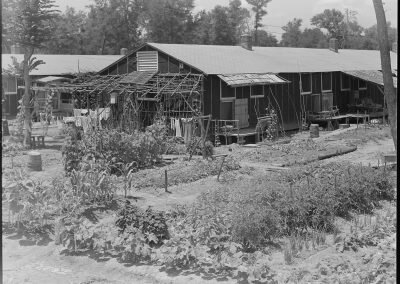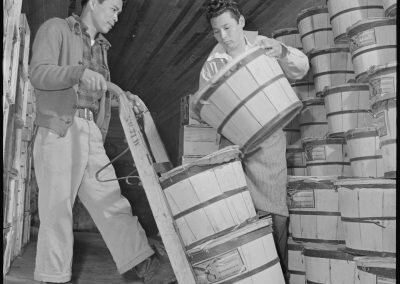A Day of Remembrance for Japanese Americans
On February 19th, 2020, Governor Asa Hutchinson signed a Proclamation declaring that day, as a Day of Remembrance for Japanese Americans. It reads in part:
The State of Arkansas takes this time to remember the anguish caused by the internment camps, and to honor the courage of the Japanese Americans that resided in these camps for over two years.
What does Japanese internment have to do with Arkansas you might wonder. I wondered the same thing too.
Monument to 442nd Regimental Combat Team
Living Quarters at Rohwer
Cemetery at Rohwer
The bombing of Pearl Harbor and the country’s reaction to that horrific event set in motion a series of actions that resulted in one of the most egregious violations of civil rights in our history. With the signing of Executive Order 9066 and Executive Order 9102, President Franklin Roosevelt provided the legal framework that would allow the apprehension and detention of all persons of Japanese descent in the country, without due process. It took less than a year for the government to move over 100,000 Japanese Americans into 10 War Relocation Centers or as we call them now, Japanese Internment Camps. Some 65% of those imprisoned were second (Nisei) and third (Sansei) generation American-born Japanese – US citizens.
As unlikely as it seems, Arkansas became the unwilling home of two of these War Relocation Centers. The only internment camps south of the Mason-Dixon line and deep into Jim Crow territory, one was built at Rohwer, the other at Jerome. The camps sat 30 miles from one another along the same railway line, and together, detained some 16,000 Japanese Americans. A young George Takei of Star Trek fame was among the internees at Rohwer.
[The train] rolled slowly alongside the barbed wire fence… beyond the fence, a distance away, we could see internees who had arrived earlier lined up and waving forlornly. Mama recognized a friend among the people out to greet us, and she managed a wan smile and a wave. Daddy just stared out the window in intense silence. With a final lurch, the train came to a stop. Our grueling three days and two nights were finally over.
– George Takei, WWII Japanese American Internment Museum
Construction of Rohwer started in the summer of 1942. Internees began to arrive in September, three full months before construction was even complete. Detainess were housed in tiny family apartements of c. 400 – 600 square feet each that were carved out of long narrow barracks. Blocks of c. 10 to 14 barracks each shared a communal mess hall, latrine and laundry, and there was a recreational barrack. The crowded conditions, loss of privacy and dignity, and unfamiliar surroundings were made only worse by the climate of the Delta. Rohwer inmate Eiichi Kamiya described it this way:
[Rohwer was] far enough south to catch Gulf Coast hurricanes, far enough north to catch Midwestern tornadoes, close enough to the [Mississippi] river to be inundated by Mississippi Valley floods, and lush enough to be the haven for every creepy, crawly creature and pesky insect in the world.
– Eiichi Kamiya, WWII Japanese American Internment Museum
Outside the camp, local hostilities churned, fueled in equal measure by fear and resentment. The residents of the tiny towns of Rohwer and Jerome, mainly African American and white sharecroppers lived very segregated, but equally impoverished lives. Tiny shacks without electricity or plumbing was the status quo and food was scarce, made even scarcer by rationing. Most (if not all) locals had never seen a person of Japanese descent and they feared them with the same post Pearl Harbor hysteria as the rest of the country. Inside the camp, the internees had food rations supplied by the government beyond what they grew as well as schools and medical care. It seemed to the locals that the living conditions were better inside the camp than outside.
The situation remained pretty much the same for the next two years. For Nisei who passed the “loyalty” test, there were two possible paths to freedom. The WRA’s “leave and resettlement program” allowed resettlement for higher education or work. Nisei men could enlisted in the Army and a number did, serving in the segregated all-Nisei 442nd Regiment Combat Team.
In 1944 the WRA began closing the camps. Jerome was the first of the ten camps to close, transferring detainees to other camps including Rohwer. Jerome was repurposed as a German POW camp (a story for another day). Rohwer (along with Tule Lake, CA) was the last to close. Some of the detainees went back to California, others made their way north and west to places like Chicago and Denver. Just a few families remained in Arkansas, though not for long.
Most of the evidence of these camps has disappeared into the agricultural landscape. At Jerome, a hospital smokestack is visible in the distance from a granite monument that marks the location of the camp along US-165 S. At Rohwer, there is a cemetery with several monuments that were built by the internees. The Rohwer site was listed on the National Register of Historic Places in 1974. The Rohwer Cemetary was listed as a National Historic Landmark in 1994.
In nearby McGehee, the WWII Japanese American Internment Museum opened in 2013. Through interpretive displays, first person accounts and letters, government documents, historic images, and works of art made by internees, it tells the story of this bleak period in our history. The musuem is located at 100 South Railroad Street and is open Tuesday – Saturday form 9:00 am – 4:00 pm. Admission is $5.00. The Rowher Cemetery is about 13 miles northeast of the museum along AR-1. The monument at Jerome is about 17 miles south of McGehee along US-165 S.
She Studios is a participant in the Amazon Associates Program, among other affiliate programs, an affiliate advertising program designed to provide a means for sites to earn advertising fees by advertising and linking to Amazon.com and other websites. As an Amazon Associate She earns from qualifying purchases.













